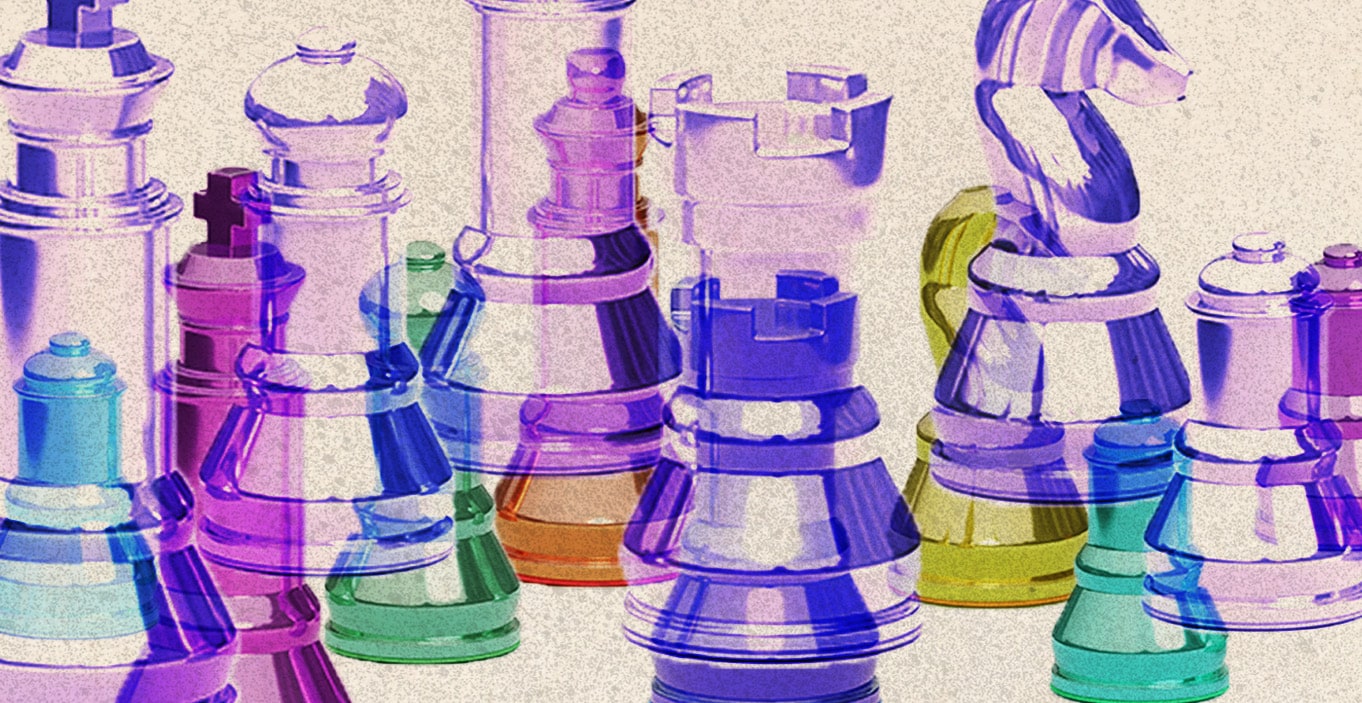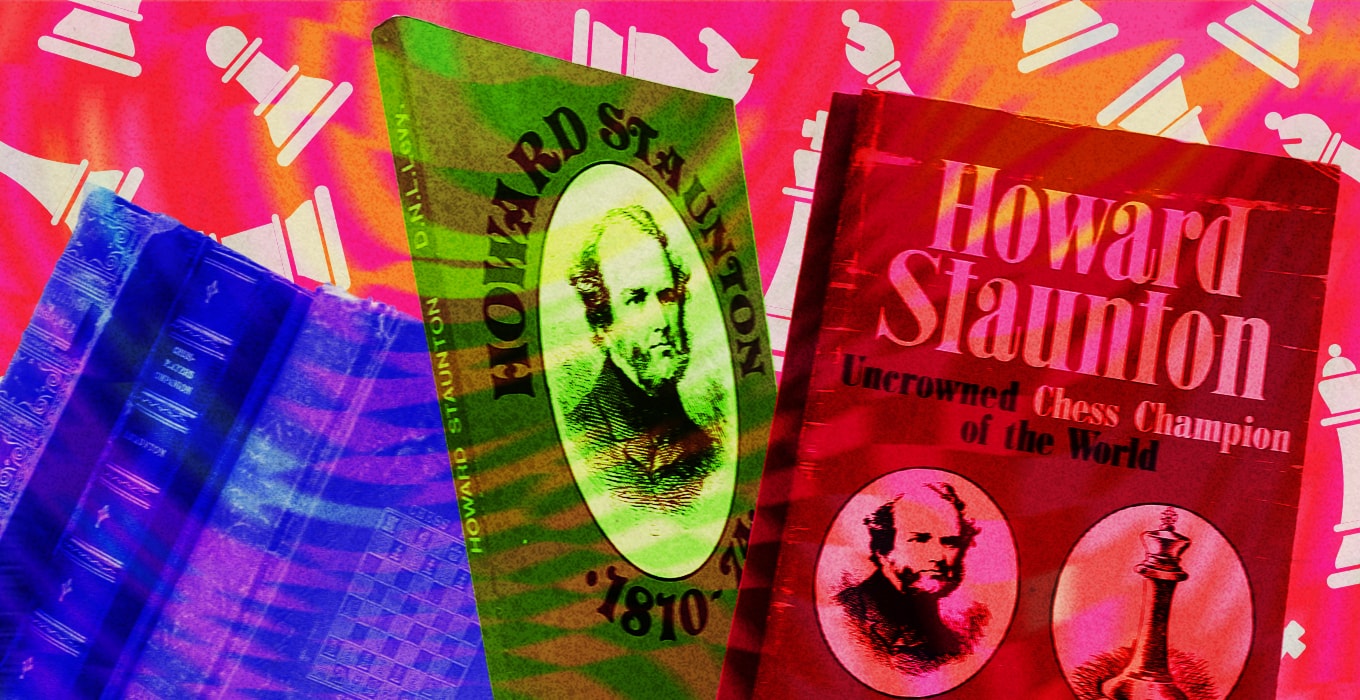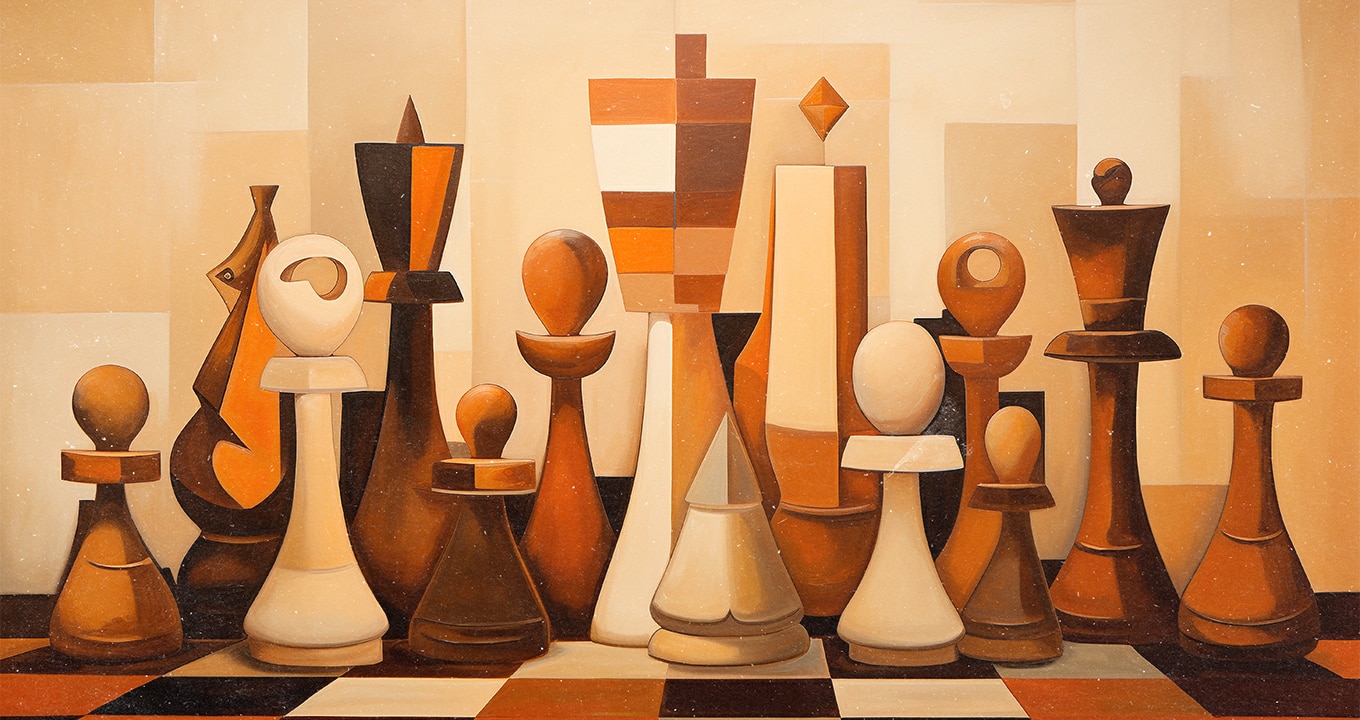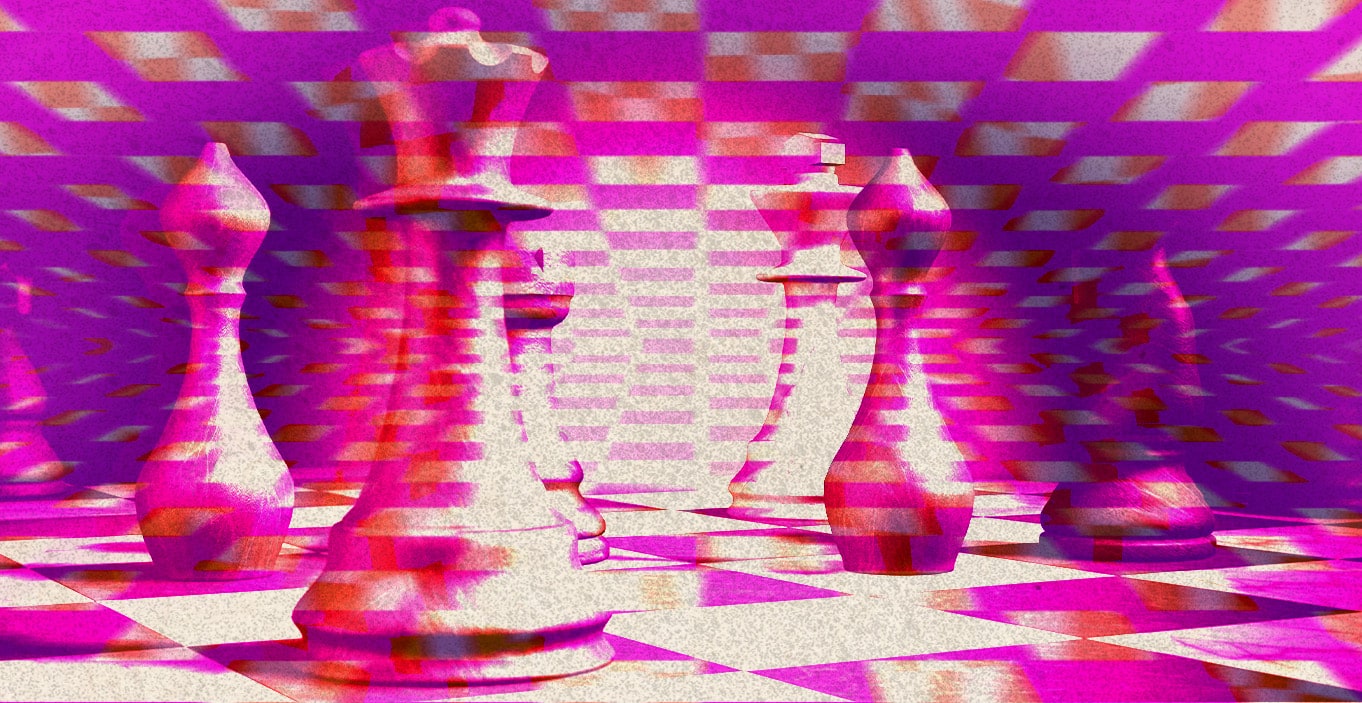As mentioned in Tuesday’s post, the Gligoric Variation of the King’s Indian Defense is recommended by Grandmaster Sam Shankland in the second part of his Lifetime Repertoire series on 1 d4.
We also mentioned that the Gligoric King’s Indian was one of the battlegrounds chosen by Anatoly Karpov and Garry Kasparov for their 1990 World Championship match.
To round off our week of 1 d4 it is time to reflect on the games from 30 years ago to see exactly how Kasparov was able to create immense complications – and how well Karpov kept control.
Kasparov – Karpov: The Fifth Match
This was the fifth in the extraordinary series of title matches between Karpov and Kasparov, but the first since 1987. The first half of the match was played in New York and then they switched to Lyon.
Karpov, by now, had changed his repertoire as White. The scars of losing his crown to Kasparov’s Sicilian Defense were part of the reason he switched to 1 d4. Kasparov brought back the King’s Indian Defense as his main anti-d4 weapon, which shows how confident he was of defeating Karpov.
Ultimately, Kasparov kept his title but the match was much closer than expected. The final score was 12.5-11.5 and Karpov showed the world he was still an extremely strong player.
King’s Indian Battleground
Karpov met Kasparov’s King’s Indian with a Saemisch (1 d4 Nf6 2 c4 g6 3 Nc3 Bg7 4 e4 d6 5 f3) in the first game of the match and the game was a relatively tame draw. Perhaps Karpov was expecting a continuation of their debate in the Grunfeld Defense. He usually erred on the side of caution when surprised in the opening.
Both players were ready for the third game of the match and Karpov played the Gligoric System.
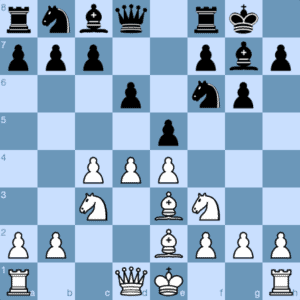 Karpov – Kasparov
Karpov – Kasparov
Game Three
New York 1990
Kasparov played 7 …Qe7 and play continued:
8 dxe5 dxe5
9 Nd5
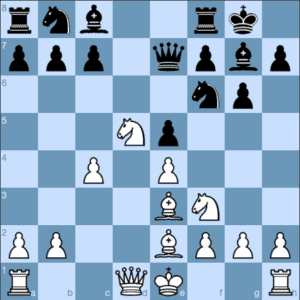 This already looks very good for White, but Kasparov has a creative idea in mind.
This already looks very good for White, but Kasparov has a creative idea in mind.
9 …Qd8
10 Bc5
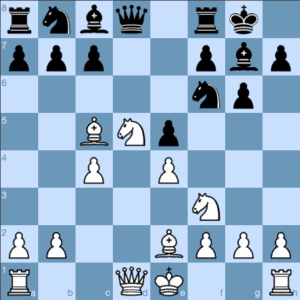
10 …Nxe4! Sacrificing the exchange to leave White without his dark-squared bishop. This is a typical idea in several King’s Indian lines, but to play this way in a World Championship is really quite something.
11 Be7 Qd7
12 Bxf8 Kxf8
This is an example of the swagger shown by Kasparov in this match. The position became even more unclear just a few moves later, when Kasparov offered his queen.
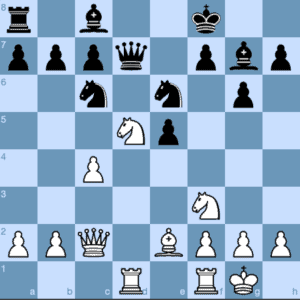
16 Nb6 axb6
17 Rxd7 Bxd7
Amazingly, despite the material disparity, Black’s position is too strong to tear down. Karpov tried – but nearly pushed too hard. The games was eventually drawn on move 53.
The fifth game saw the Gligoric System in action again, but the game was much quieter and ended in a routine draw.
The Champion’s Blunder
Game seven brought a painful defeat for the champion and his King’s Indian.
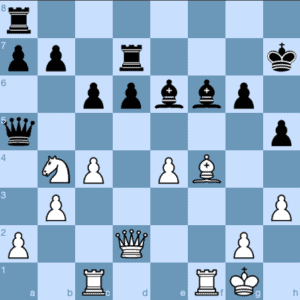 Karpov – Kasparov
Karpov – Kasparov
Game Seven
New York 1990
This was another Gligoric system. Kasparov, with a one-point lead in the match and swagger intact, has just played 27 …Qd8-a5??, which is a blunder.
Karpov pounced with 28 Nd5! The very basic point is that 28 …Qxd2? is met by 29 Nxf6+! Kg7 30 Bxd2 and White remains a piece ahead. Kasparov tried to muddy the waters with 28 …Qc5+ but Karpov kept complete control and won in 44 moves.
Kasparov needed a break from the King’s Indian Defense and he reverted to the Grunfeld the next time he had Black. The game was drawn and it was back to the Gligoric System for game 11.
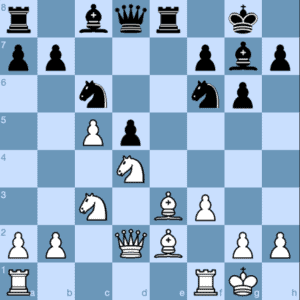 Karpov – Kasparov
Karpov – Kasparov
Game 11
New York 1990
Kasparov sacrificed the exchange again with 13 …Rxe3!? He then tried to break through on the dark squares but Karpov was equally to the tasks set by the position and the game ended by perpetual check win move 24.
The End of the King’s Indian Battle
When the match moved to Lyon for the second half of the contest, the King’s Indian Defense was rested for games 13, 15 and 17. Three more Grunfelds; one win and two draws, from Karpov’s point of view.
The King’s Indian returned for games 19, 21 and 23. The first was yet another Gligoric System and then Karpov tried the Saemisch in his final two games as White. Only game 23 was decisive; Karpov won with a crushing attack, but the result was quite academic; Kasparov had already done enough to retain his title.
We cannot do the game justice in a single blog post, but I hope the snippets above will inspire readers to track down the big clashes in the Gligoric System of the King’s Indian Defense.
Of course, if you want to investigate the system in greater detail and see how theory has developed after 30 years, then you need to investigate our brand new course, Lifetime Repertoires: Sam Shankland’s 1. d4 – Part 2.




